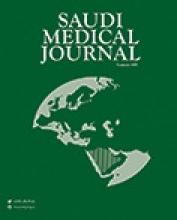Abstract
OBJECTIVE: Prevalence, intensity and incidence of schistosomosis and soil-transmitted helminthosis among school children in an ignored area in Yemen were determined. The study aimed to investigate the impact of single doses of Praziquantel or Albenedazole or both, relating to sanitary, socioeconomic and behavioral practices on the prevalence and intensity of infections.
METHODS: Out of a total number of 897 pupils, 453 were randomly selected from AlMahweet town and 444 from rural surrounding areas. Millipore filtration, modified Kato and precipitation techniques were applied for urine and stool analysis.
RESULTS: Prevalence rates were 27% for schistosomosis, 61% for ascariosis, 21% for trichuriosis, 2% for fascilosis, 0.3% for entrobiosis, 0.7% for hook worm infection and 0.2% for strongloydiosis. Factors found confounding the relationship between schistosomosis and residence, under logistic regression analysis, were sex and frequency of water contact. Probability of infection by Bilharzia for boys who reside in rural AlMahweet and visit the water source is 0.52, compared to 0.30 for their mates who reside in AlMahweet town. Odds ratio estimates accounted for via residence was 2.5, via water contact 1.7 and via boys 3.2. With regards to other helminthic infections, availability of latrines remained the only significant factor under ANOVA.
CONCLUSION: In conclusion, annual campaigns for treatment as a single control measure can reduce the infection rate of S. mansoni by 62.5%, T. trichura by 48% and A. lumbricoides by 24%. Whereas for S. hematobium the appropriate time interval for intervention should be shortened according to the findings of a properly designed intervention study before used as a single control measure. Since 77% of the children were infected by other helminthes, therefore mass treatment should be extended to cover all children. For those boys in rural AlMahweet who visited the water source during the week before the interview, mass treatment for schistosomosis is recommended since the prediction of infection rate reached 52%.
- Copyright: © Saudi Medical Journal
This is an open-access article distributed under the terms of the Creative Commons Attribution-Noncommercial-Share Alike 3.0 Unported, which permits unrestricted use, distribution, and reproduction in any medium, provided the original work is properly cited.






